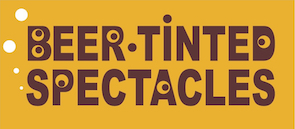I started my career as a beer sales person some *ahem* years ago. The portfolio, for the brewer Bass, was an assortment of mainly domestic lager brands: Carling Black Label, Tennent’s Extra, Tennent’s Super, Breaker and Lamot Pils (originally a Belgian beer, at the time recently brought into UK production. Plus ça change, eh?). There were others flitting in and out of the premium space, concoctions such as Treffliches Altenessen Gold (T.A.G.), Stauder Pils or exotic Scottish imports, such as Tennent’s Gold Bier.
In the price fighting territory was Tennent’s Pilsner; those of a certain age may remember the advert that was uniquely shot in reverse, then reversed to play forward. As odd to type as it was to watch. And Tennent’s Pilsner was competing against a number of big, well supported brands yet at the same time competing with sharp pricing on the (still relatively new) multipacks of 12 or occasionally 24 cans in size. There was Castlemaine XXXX, Heineken (the weak UK brewed version, as was), Harp, McEwan’s and most notably Hofmeister.
Yes – Hofmeister. The hirsute Bav-bear-ian who we were implored to “follow”, not in the social sense. Big yellow cans, usually offering 13.5% extra free, and with a franchise, by this time reduced to supermarkets and the south of England in particular. But just a few years earlier, Hofmeister had been Courage’s main focus, enjoying big bucks advertising support and, with the help of George the Bear, was pushed hard on draught, until the market started to move to authentic imports and Courage licensed other brands that were shinier and newer. The focus was lost until finally, in a portfolio review, Hofmeister was dumped without ceremony in 2003. Cans canned if you will.
And really, that then, was that. Other, more interesting and up to date, brands had replaced the furry Bavarian, and to be honest, the gravestone didn’t have much chiseled into it. No one in particular was mourning the loss.
Which makes the rebirth of Hofmeister quite curious. The name and the striking colourways are really the only consistent motifs. It’s clear that for the new team behind the brand erasing any memories of Hofmeister as a footie and ‘laaaads’ swilling beer is a priority; old memories erased and replaced by more powerful, positive associations. But of course, those drinkers are in their late 50s and beyond, so you could argue why bother? And so, the strategy of just going for all out authenticity makes sense – erase lingering doubts with those who remember it; create a striking new beer for those who don’t, to stand out in a crowd. This then is a beer brewed in Bavaria by Privatbrauerei Scweiger in Markt Schwaben, east of Munich. A 5% ABV Helles sold, for now at least, in 330ml brown glass bottles with a classic, 1L handled maß to serve it in. The choice of 5% ABV is curious too, when frankly, the momentum in the market place is mid 4s, but again, it’s clear they want to leave no doubt about this being reborn and different. I liked it a lot… this is a beer very much in the mould of a well rounded, quite-honeyed and highly drinkable Bavarian helles. The presentation calls for a draught serve, and with the tools they have developed to support it, would make it a memorable experience. But I worry that by itself, and without the backing of a powerful player with access to distribution in the on trade, it may struggle (but who knows, there may be a plan there).
And that’s why, perhaps, Hofmeister have also launched a weißbier (and a credible low alcohol line as well). The Weiss is excellent with a warming alcohol and a clearly hard working yeast that’s thrown out those classic esters of woody clove – without an overbearing banana trait that impacts drinkability. Weißbiers are usually lazily characterised as perfect for Summer drinking, but I’d vacuum one of these up In The Deep Midwinter quite happily, thank you.
It’s a pairing that would sit very happily on many a bar, offering something that are both classics of their styles but wonderfully drinkable too. The Bear, it seems, is now worth following.



